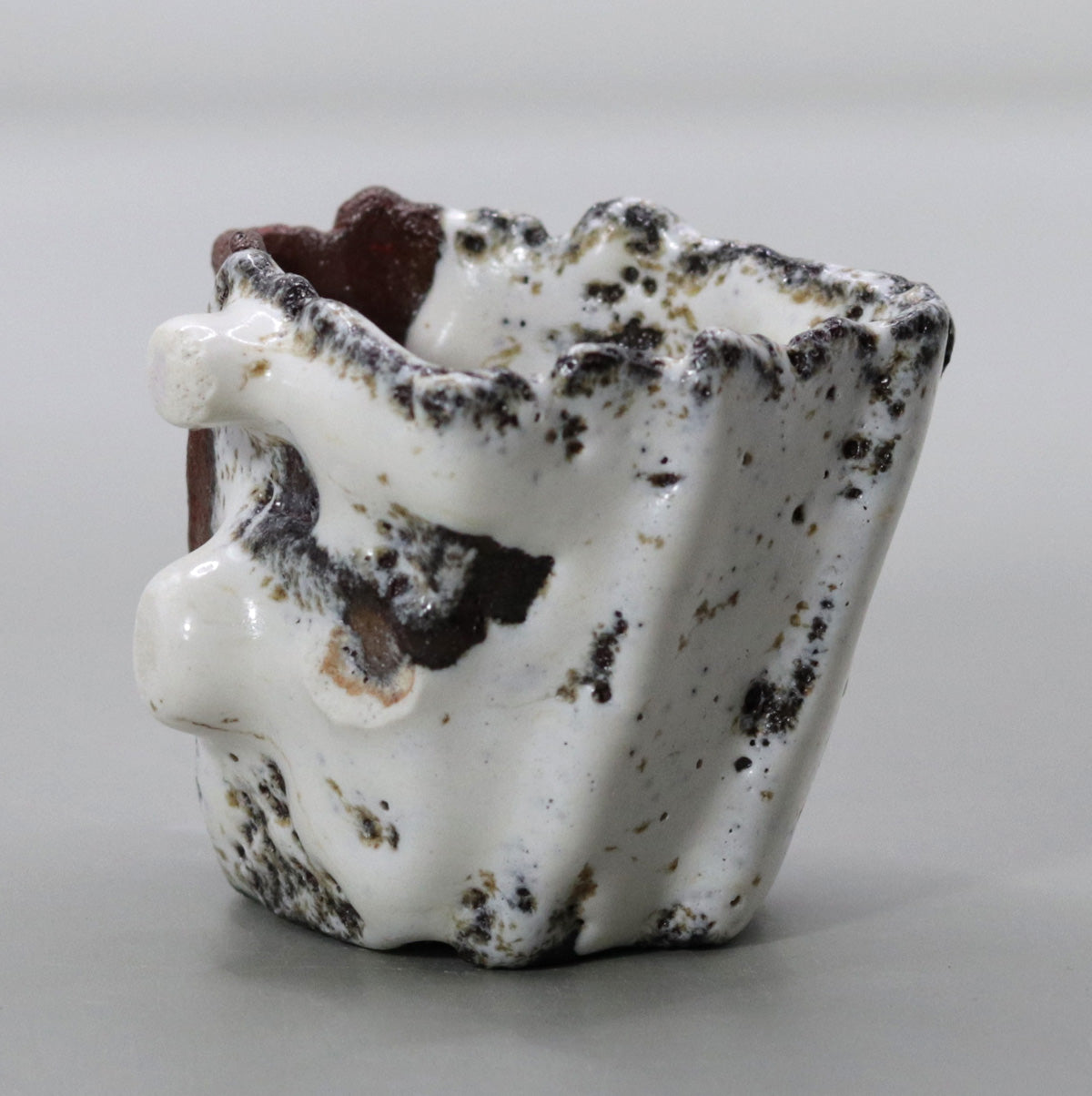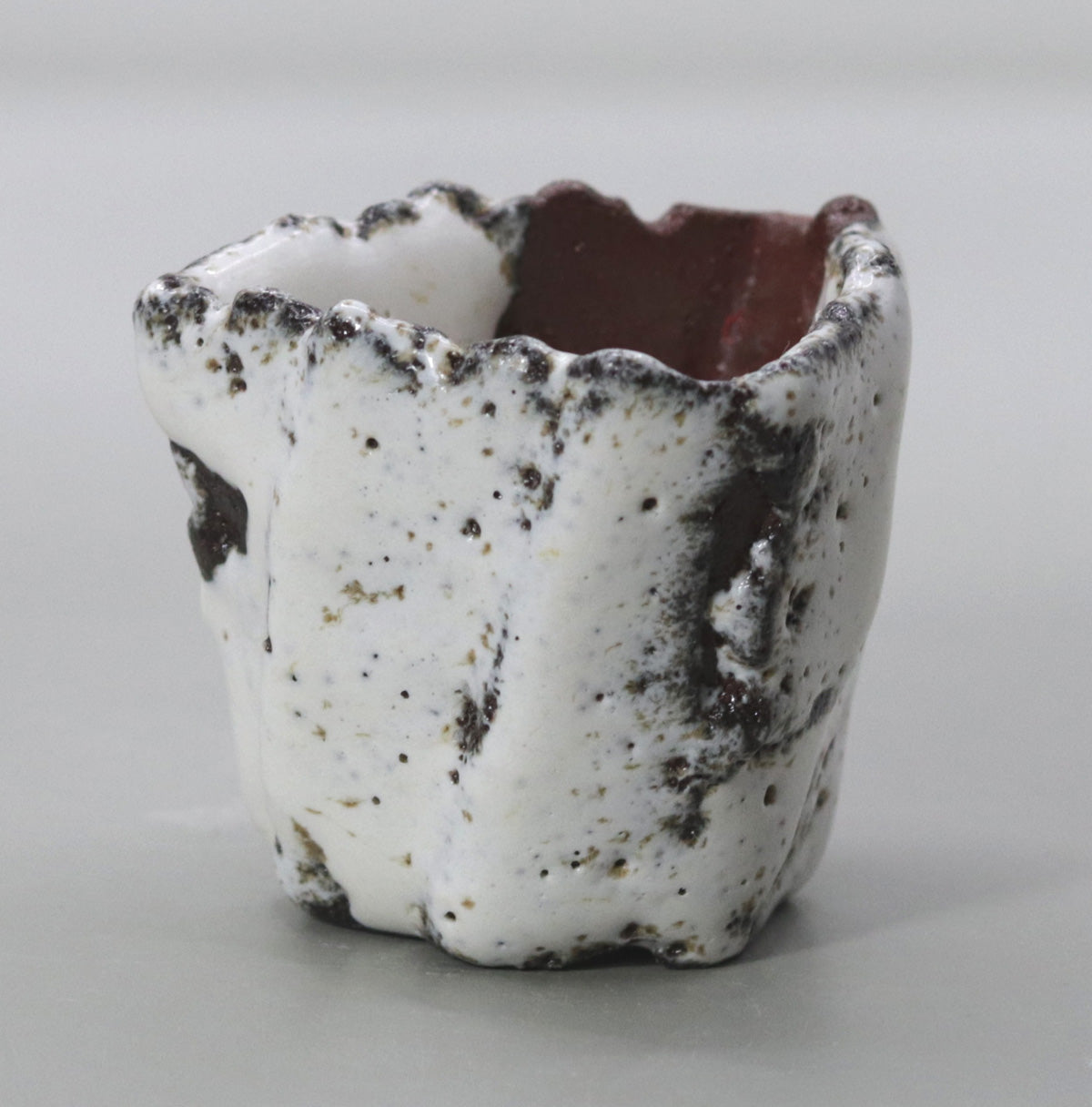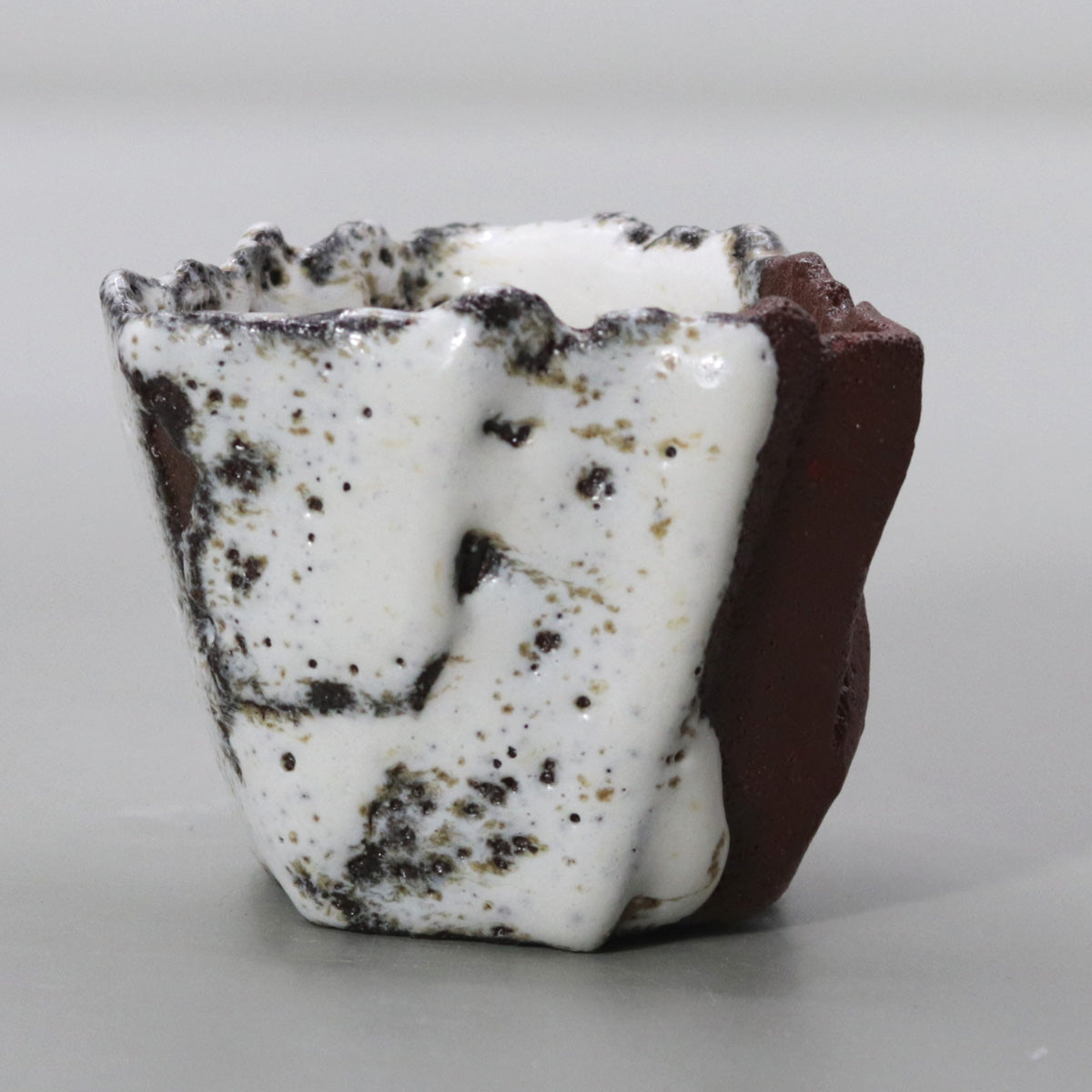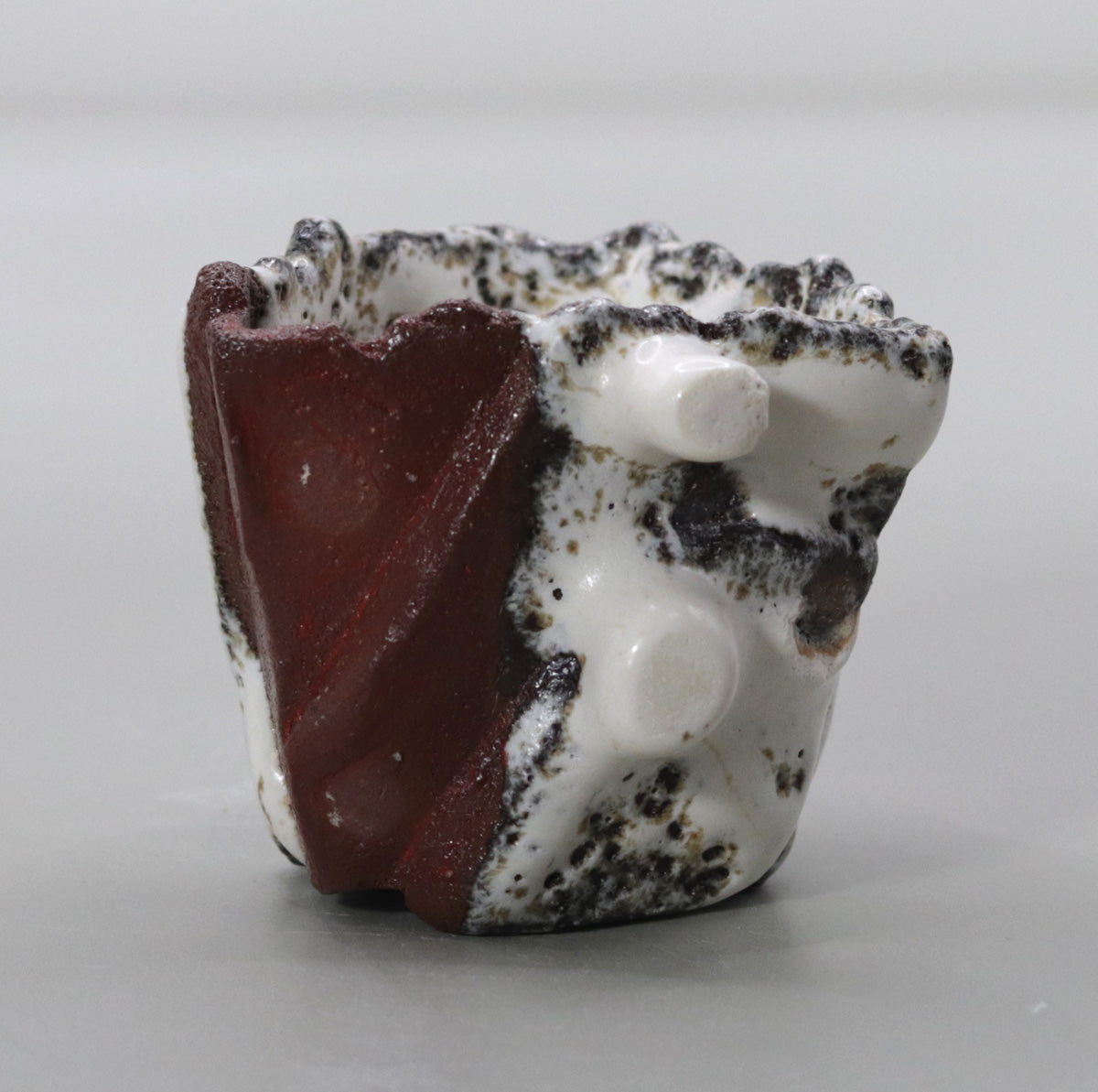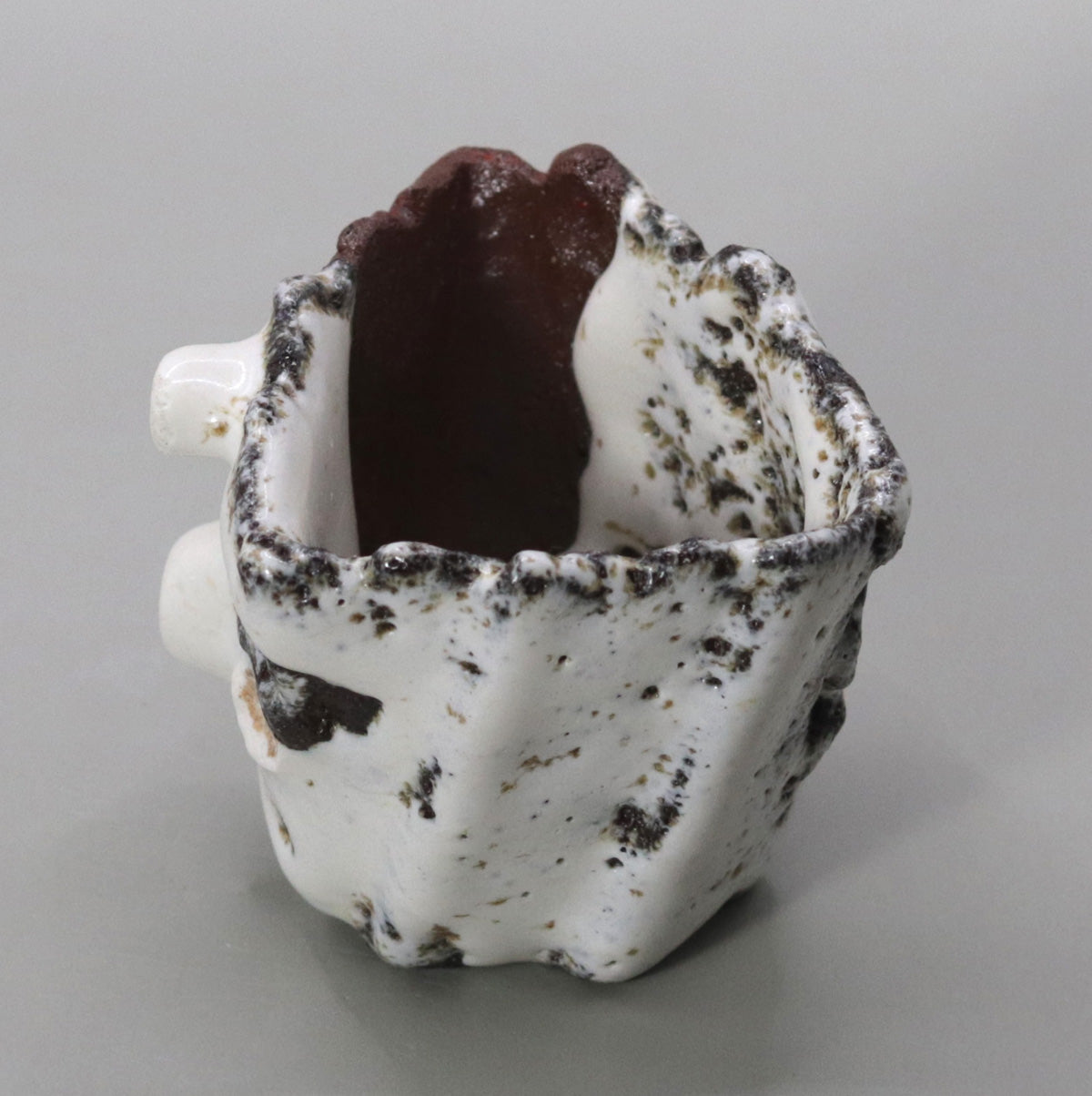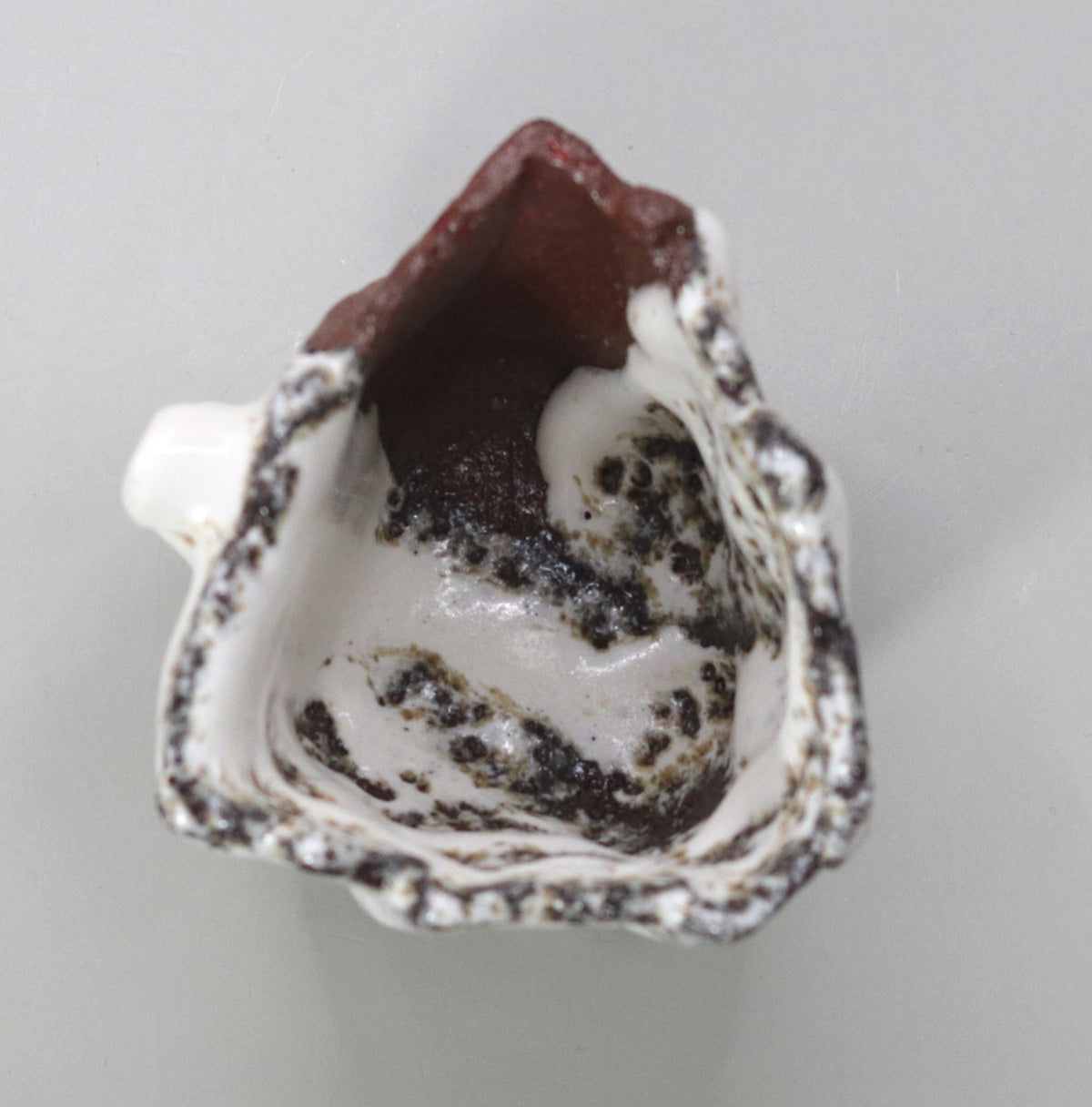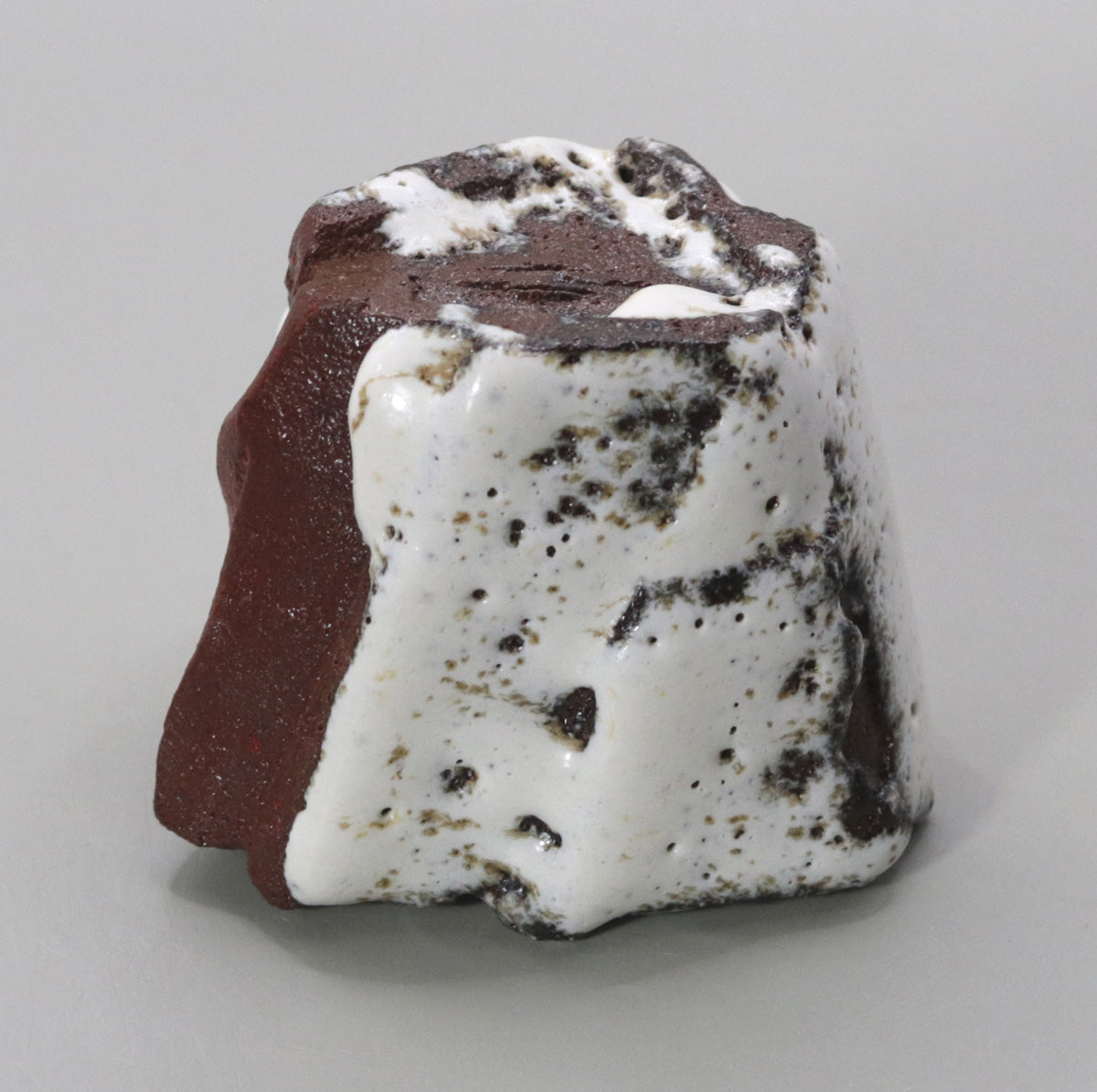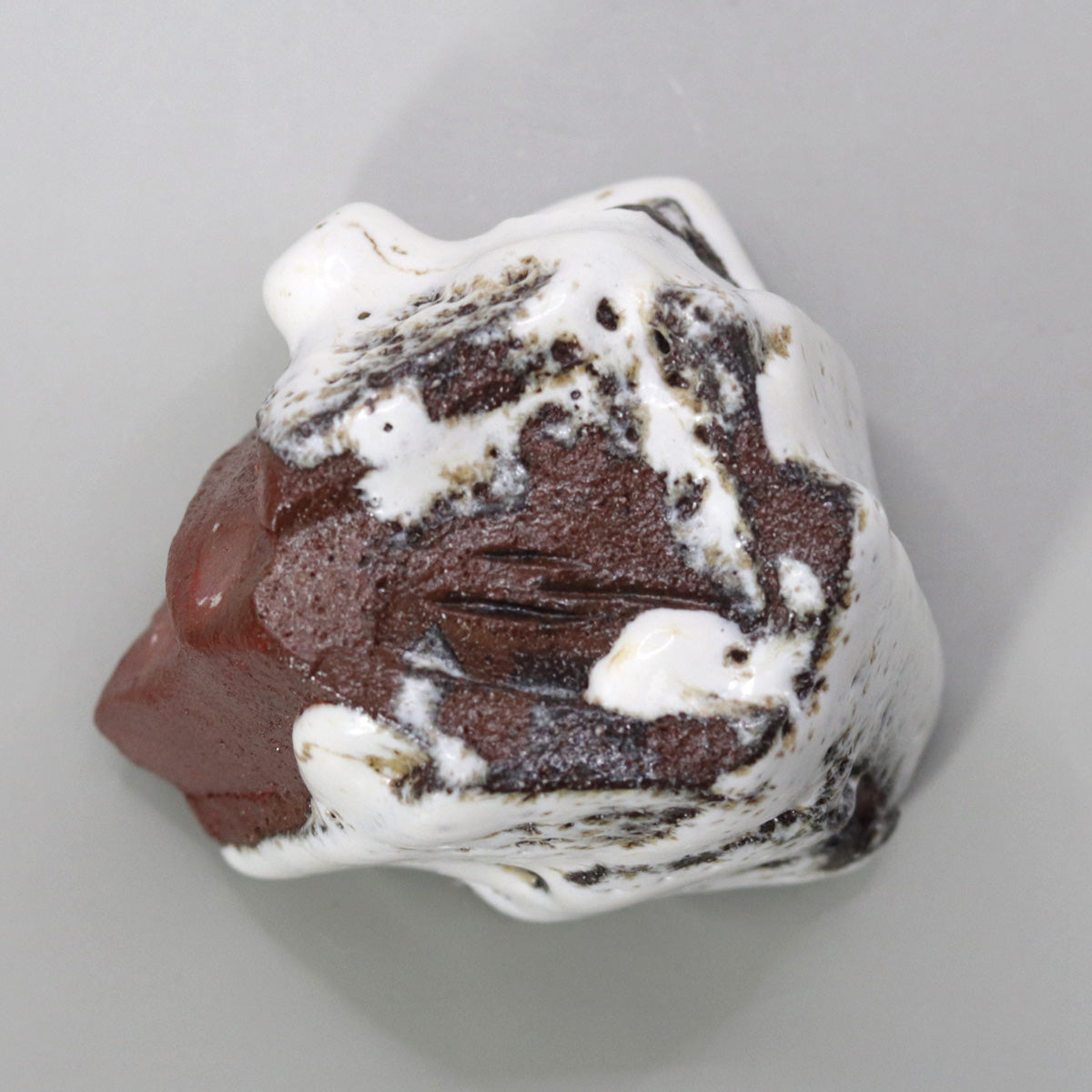Straw white glazed sake cup by Masashi Nishibata
Straw white glazed sake cup by Masashi Nishibata
Couldn't load pickup availability
Width: 8cm Depth: 7cm Height: 7cm
The appearance of a snowy landscape drawn by straw-white glaze
The straw-white glaze that covers this piece is made by vitrifying the silica and alkali contained in the straw at the high temperatures of the wood-fired kiln, creating a soft, milky white color. The iron from the base material turns blackish-brown and is scattered throughout the glaze, creating a scene reminiscent of the shadows of trees appearing on the snowy surface of early spring. In places, the glaze breaks thinly, revealing the reddish-brown color of the Tanba clay, reminiscent of the moment when the earth beneath peeks out after the snow melts, and the trio of white, black, and red gives the surface of the piece depth.
A sculptural form created by unevenness and bulges
The body is based on a gentle polygon, with vertically chamfered edges that cast shadows in the light. Two protrusions on the sides function as fingerholds while also serving as a sculptural accent reminiscent of overhanging snow cornices. The wavy rim subtly changes the feel on the mouth depending on the position of the mouthpiece, bringing a pleasant playfulness to the act of drinking.
The warm breath of Tanba clay
The base is made from rough clay from Tamba, which is rich in iron, and the reddish-brown surface is exposed where the glaze is thin. The coarse clay grains convey a rough feel to the fingertips when touched, and in contrast to the smoothness of the straw-white glaze, the energy of "earth and fire" can be experienced both visually and tactilely. The base is firmly fired yet thin, so it feels light in the palm of your hand and also has the functionality of gently maintaining the temperature of the sake.
Functional beauty as a sake cup
The small size makes it ideal for sipping small sips of sake, and the sake poured into the mug spreads shallowly, ensuring the aroma rises without escaping. Holding the mug with your thumb and supporting the base with your index and middle fingers naturally creates a stable grip. For cold sake, the contrast between black and white stands out on the surface of the sake, while for warm sake, the milky white glaze becomes slightly cloudy, creating a soft glow reminiscent of a snow-covered lantern.
A design that connects tradition and innovation
The classic material of straw white glaze has a history that is connected to Shino and Haikatsugi ware of the Momoyama period, but Nishibata Masa style incorporates protrusions and bold chamfering, giving a sculptural modernity to the microcosm of the sake cup. The technique of deliberately exposing the red clay is a contrast that is rare in traditional Tamba ware, clearly showing the intersection of tradition and innovation.
Resonance of Wabi-Sabi and Vitality
The milky white tranquility evokes the concept of wabi-sabi, while the exposed red clay symbolizes the vitality of the earth. The clay breathes within the white, reminiscent of a snowy surface, and the protrusions add a sense of dynamism, creating a dialogue between "stillness and movement" and "yin and yang" within a single cup. Whether used at a tea ceremony or quietly facing each other over an evening drink, this vessel adapts to the user's time and changes its appearance along with the taste of the sake.
A second view carved by time
The straw-white glaze, which has fine crazing, slowly soaks up sake and water, changing from white to a pale gray-brown. The protrusions and chamfers acquire a sheen with continued contact with the fingers, and the red clay parts absorb sake and oil and take on a moist, deep crimson color. Over the years, the white of melting snow will change to the pale pink of a sunset, and the ink spots will fade to the softness of decaying leaves, storing up a story unique to the owner.
Nishibata Tadashi's "Straw White Glazed Sake Cup" is a small sculpture that embodies snow and earth, stillness and dynamism in the palm of your hand. The more you pour, savor, and use it, the more its beauty deepens. We hope you will treasure it for a long time and enjoy each and every moment of your cup.
Tadashi Nishibata Biography
Born on February 24, 1948. Started making pottery in 1969. 1976. Hyogo Prefectural Exhibition Encouragement Award. 1986. Selected for the Japan Traditional Crafts Exhibition for the first time. 1988. Selected for the Japan Traditional Crafts Exhibition. Japan Traditional Crafts Exhibition. Japan Crafts Association President's Award. 1989. Selected for the Japan Ceramic Art Exhibition. Nogawa Memorial Award, Handon no Kai. 1991. Selected for the Japan Traditional Crafts Exhibition. Selected for the Japan Ceramic Art Exhibition. Grand Prize at the Tea Ceremony Forms Exhibition. 1992. Selected for the Japan Traditional Crafts Exhibition. Excellence Award at the Tea Ceremony Forms Exhibition. Hyogo Prefecture Emerging Artist Encouragement Award. Invited to exhibit at the NHK-sponsored Paris - 100 Contemporary Japanese Ceramics Exhibition. Excellence Award at the Tea Ceremony Forms Exhibition. 1993. Selected for the Japan Traditional Crafts Exhibition. Solo exhibition at Sogo Hiroshima store. Kyoto Chemin. 1994. Selected for the Japan Traditional Crafts Exhibition. Solo exhibition at Nihonbashi Mitsukoshi Main Store. 1995. Selected for the Japan Traditional Crafts Exhibition. Solo exhibition at Sogo Hiroshima store. 1996. Selected for the Japan Traditional Crafts Exhibition. Awarded the Excellence Award at the Tea Ceremony Design Exhibition, solo exhibition at Nihonbashi Mitsukoshi Main Store
1997 Encouragement Award at the Tea Ceremony Design Exhibition 1998 Selected for the Japan Traditional Crafts Exhibition Solo exhibition at Mitsukoshi Nihonbashi Main Store Selected for the Japan Traditional Crafts Exhibition 2000 Solo exhibition at Mitsukoshi Nihonbashi Main Store Solo exhibition at Mitsukoshi Fukuoka 2001 Selected for the Japan Traditional Crafts Exhibition 2002 Solo exhibition at Mitsukoshi Nihonbashi Main Store Solo exhibition at Gallery Dojima 2003 Solo exhibition at Touchingston, USA 2004 Grand Prize at the Tea Ceremony Design Exhibition at Sogo Hiroshima 2005 Exhibited at the Akashi City Museum of Culture and Hyogo Ceramics Exhibition Purchase of Akadobedai, Hyogo Ceramic Art Museum Solo exhibition at Gallery Dojima, Mitsukoshi Nihonbashi Main Store 2006 Grand Prize at the Tea Ceremony Design Exhibition Selected for the Japan Traditional Crafts Exhibition at the Museum of Fine Arts, Boston and the New York Japan Society Gallery Solo exhibition at Yokohama Takashimaya Touchingston, USA Father and Son Exhibition at Matsuyama Takashimaya Toshunkai Exhibition, Sogo Yokohama. Encouragement Award at the Tea Ceremony Art Exhibition. Selected for the Japan Traditional Crafts Exhibition in 2008. Selected for the Japan Traditional Crafts Exhibition. Solo Exhibition, Yokohama Takashimaya, Mitsukoshi Nihombashi, Santa Fe, Touchingston, USA. Toshunkai Exhibition, Funabashi, Seibu, Sogo Hiroshima. Invited to the Japanese Ceramics Exhibition in 2009. Solo Exhibition, Gallery Dojima, Sendai Mitsukoshi, 2010. Sogo Kobe. Exhibited in the Musee Tomo Grand Prize Exhibition, Contemporary Tea. Solo Exhibition, Yokohama Takashimaya, Touchingston, USA. Invited to the Japanese Ceramics Exhibition. Solo Exhibition, Joan B. Marvis, New York, USA. Invited to the Japanese Ceramics Exhibition in 2013. Exhibited in the "Contemporary Famous Bowls" exhibition at the Musee Tomo, Kanmi Kikuchi Memorial. Solo Exhibition, Mitsukoshi Nihombashi, Santa Fe, Touchingston, USA. Gallery Miyazaki, Sogo Kobe, Chiba Sogo, 2014. Solo Exhibition, Mitsukoshi Nihombashi, 2015. Received the Hyogo Prefecture Cultural Award in 2016. Exhibited at Higashihiroshima City Museum of Art for "Ceramics that Color Our Lives - Food Ware" Exhibited at Joan B. Marvis' 40th Anniversary Exhibition in 2017.
2018 Solo Exhibition at Nihonbashi Mitsukoshi Main Store
Share
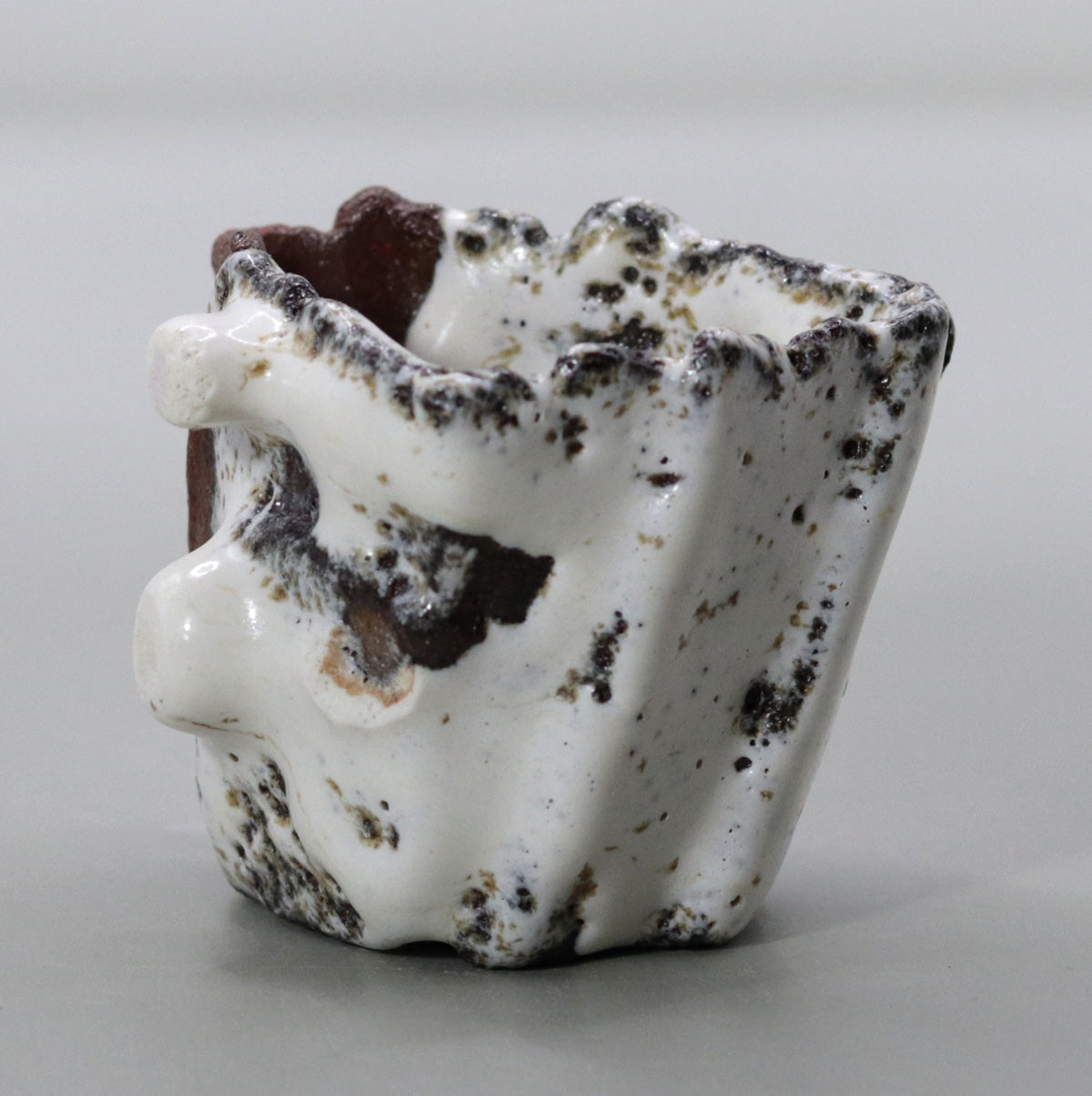
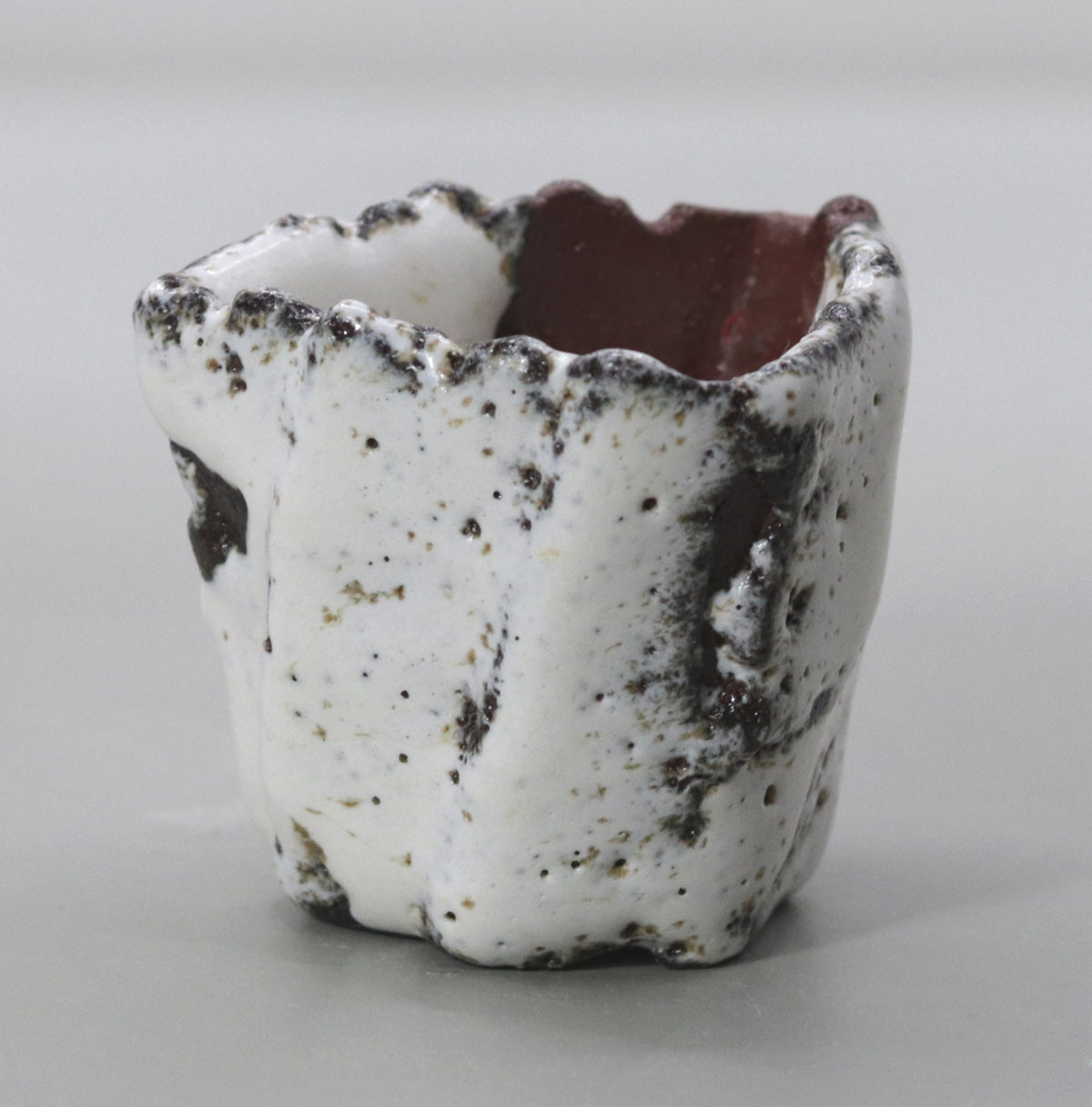
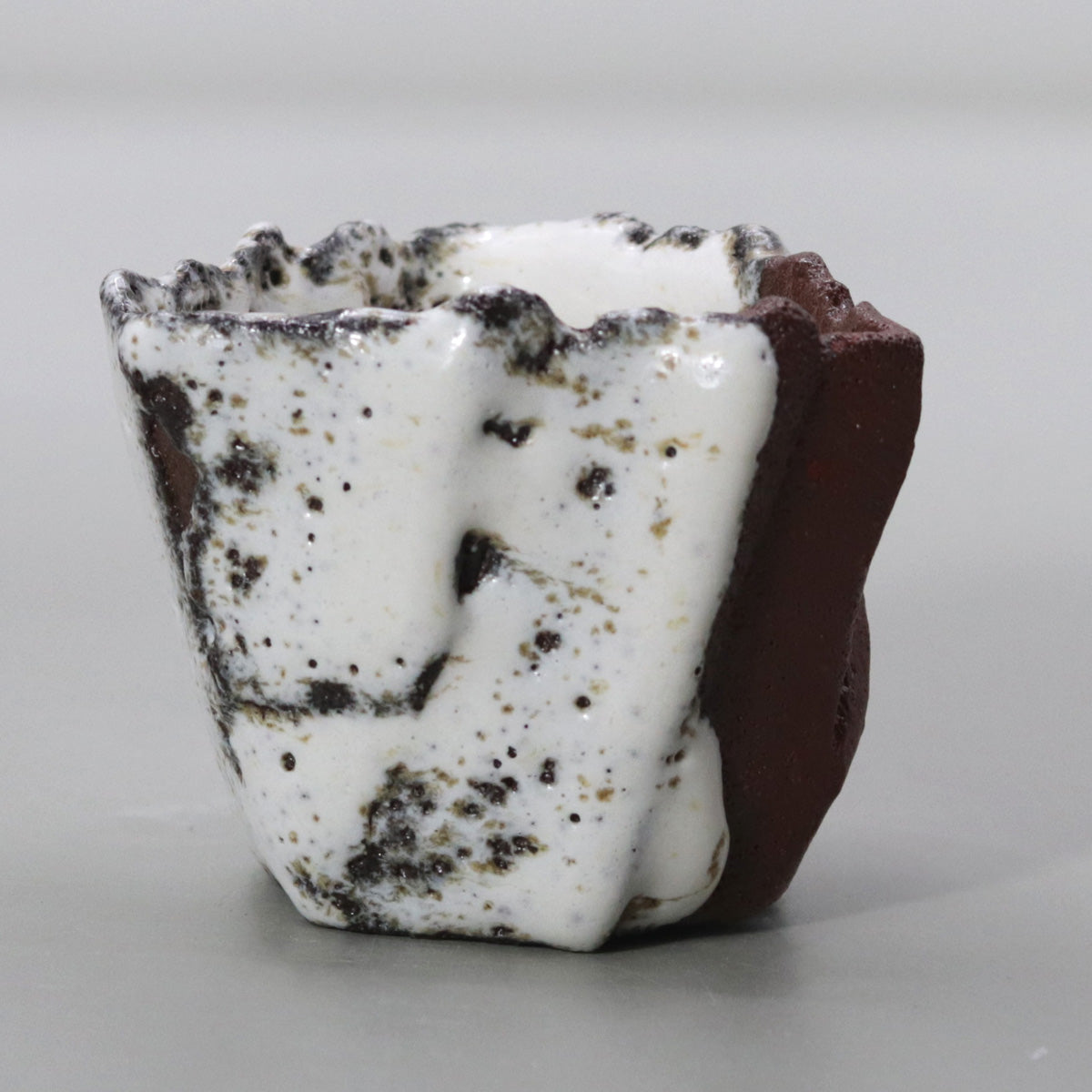
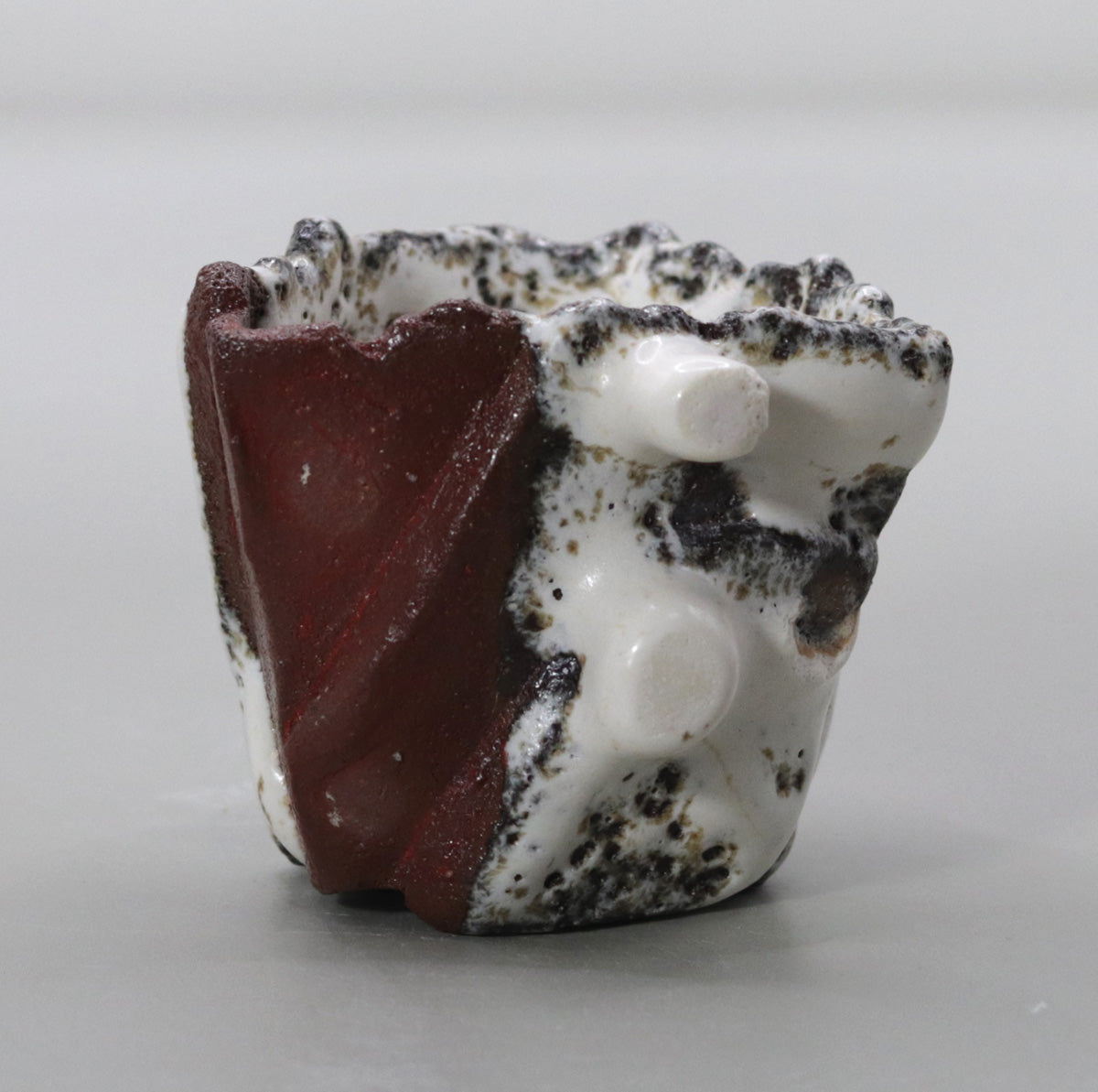
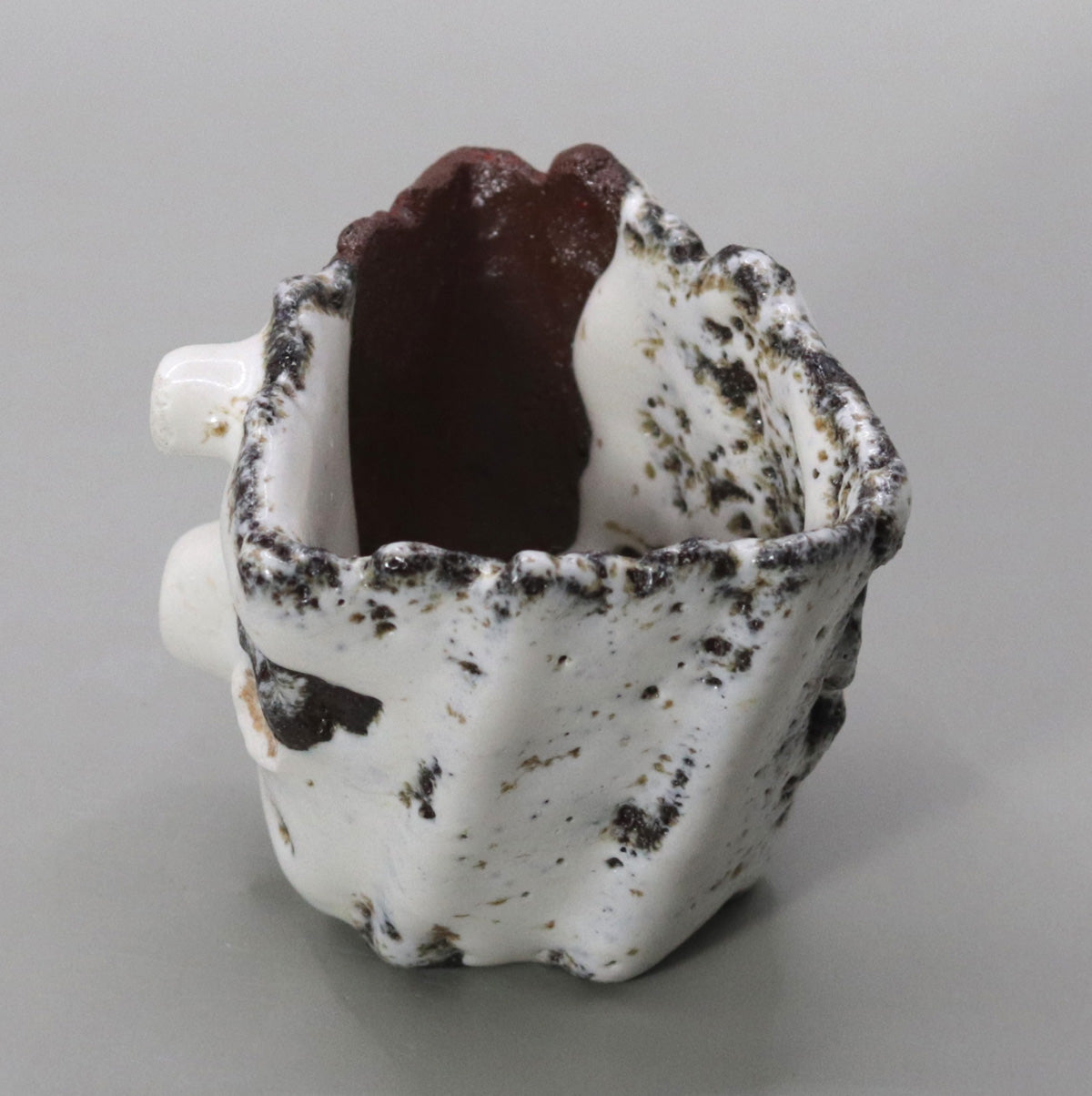
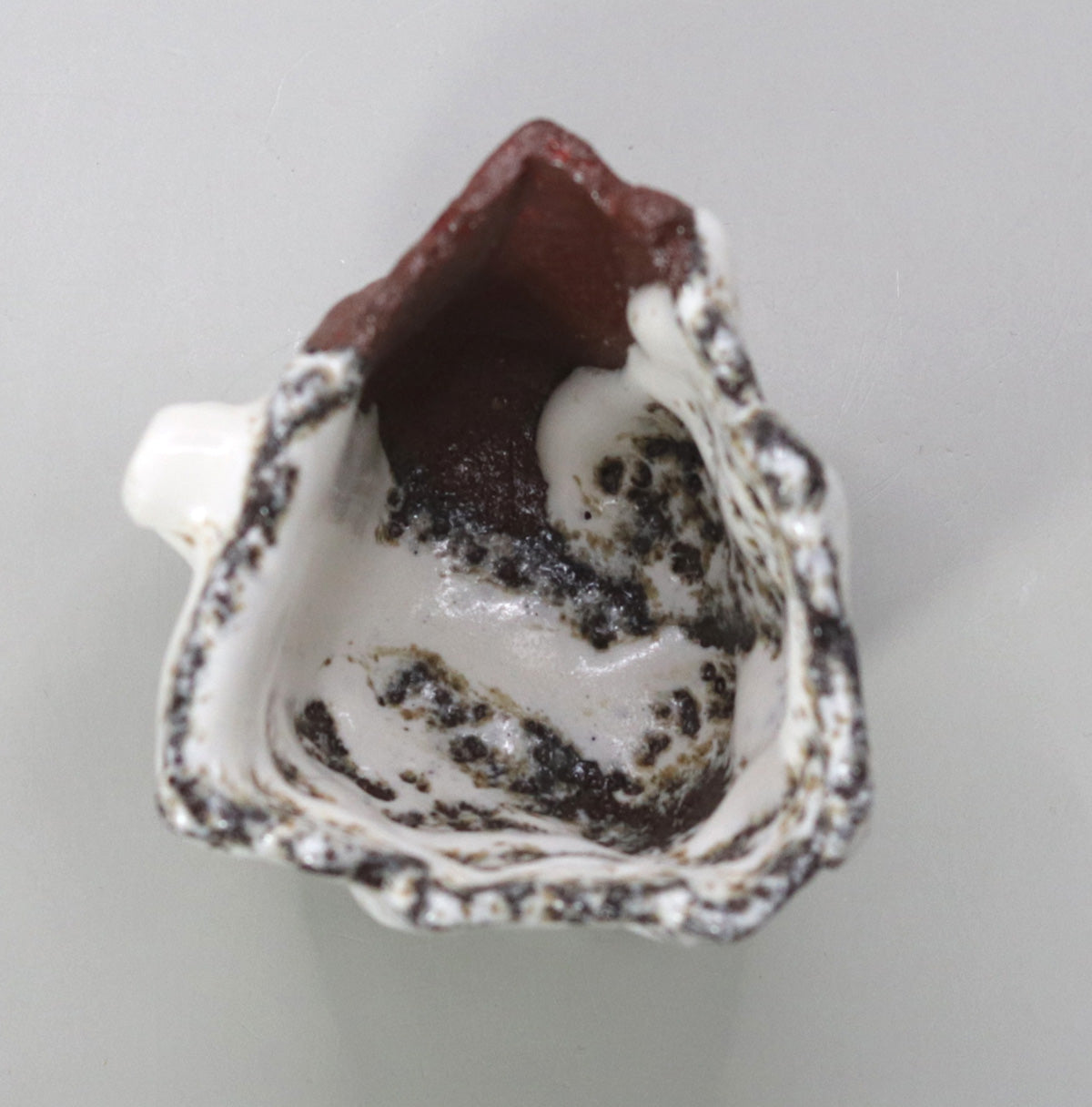
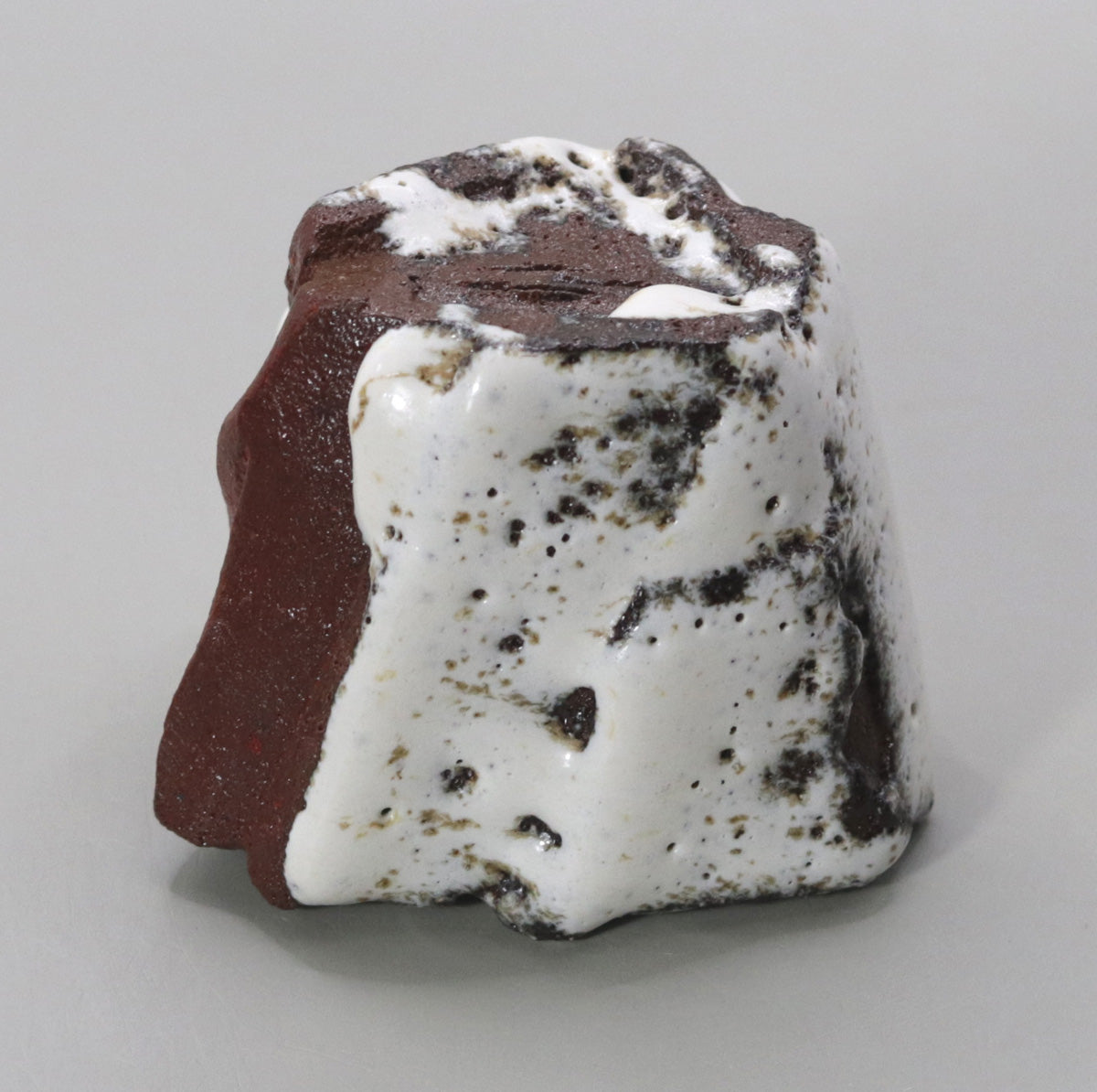
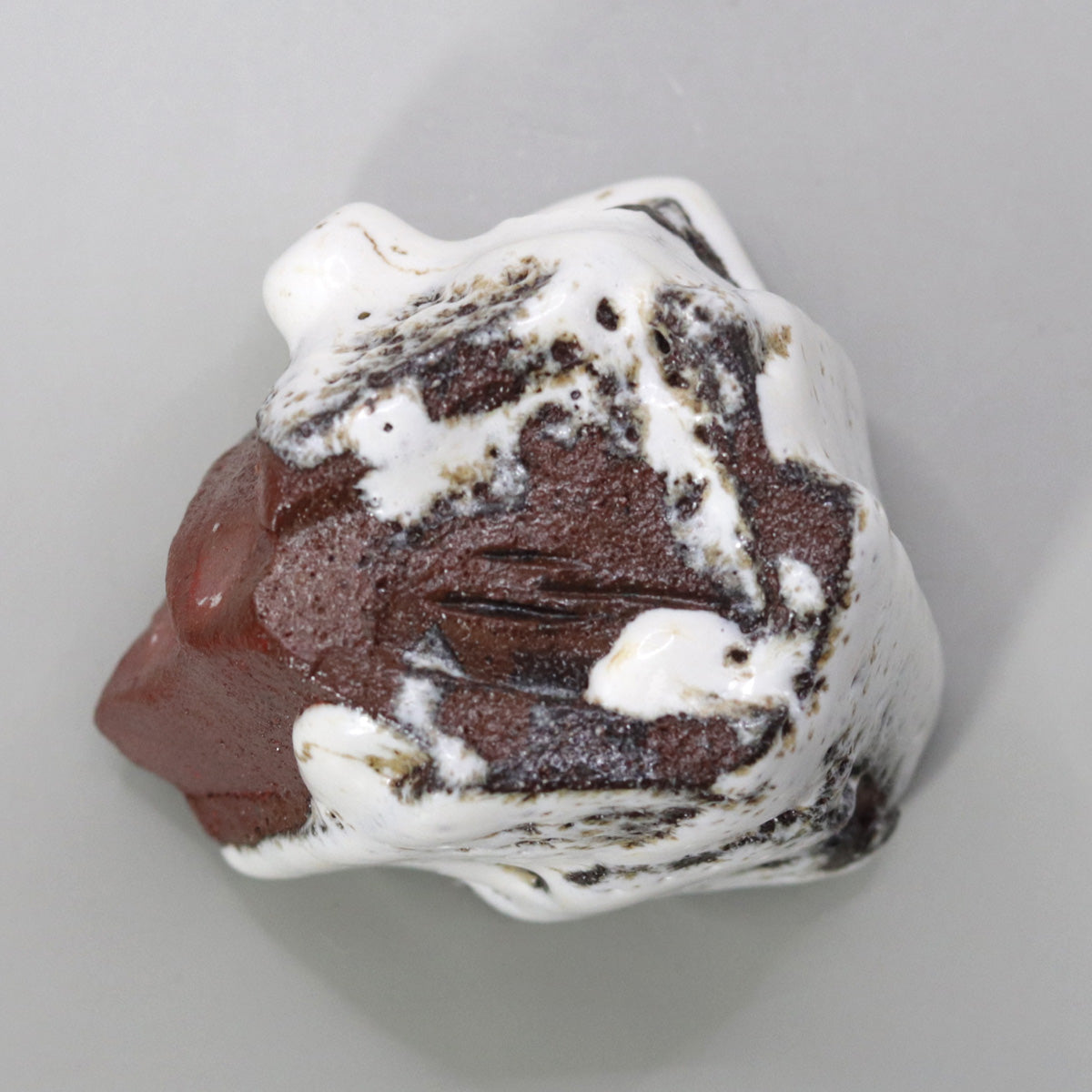
Multi-Column
-
[I will send it to you quickly and carefully]
We carefully package each product in a way that suits it best.
Also, delivery times vary depending on the piece (vessel, etc.).
Items that already come with a box will be shipped within 1-3 days of the order date.
For items that require a box to be made after your order, it will take approximately 30 days for production to be completed and then shipped.
In either case, once we have confirmed your order, we will contact you by email to inform you of the delivery date.
-
[Requests when purchasing pottery]
Even products that look the same may differ slightly in color, shape, size, etc.
The way the glaze is used, the power of the kiln, the firing method, the season, and the humidity also affect the appearance of the pottery.
Please understand the individuality of each piece of pottery and enjoy the unique warmth of handmade.

